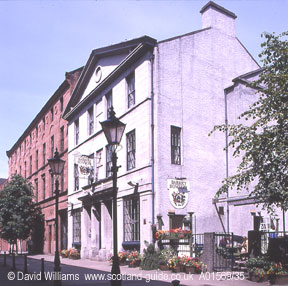The Glasgow
Guide
www.glasgow-guide.co.uk
©
David Williams
Page 3 of 4
Walk up High Street. This was the most important thoroughfare of the medieval city as it ran downhill from the Cathedral to Glasgow Cross. The city gradually expanded eastwards and westwards from here. In the centuries that followed, industry generally developed in the eastern side of the city while commercial premises and better housing were found in the west. Weather played an important part in this differentiation: since the wind most frequently blows from the south-west, those who could afford to move westwards did so to be upwind of the factories` noxious fumes. For the same reasons, Glasgow`s numerous hills almost inevitably have the more expensive houses at their summit where the breeze keeps the air fresher and cleaner.
To the west of High Street is a great collection of warehouses (precursors of today`s department stores) in what has become known as the Merchant City. With Glasgow`s changing fortunes many of these became dilapidated after the Second World War but have now been renovated and converted into blocks of flats; this, in turn, has helped to revitalize the area. A good example of new life being breathed into old buildings can be seen on the right, at 105-69 Bell Street, where the massive Bell Street Warehouses (1882-3), originally built for the Glasgow and South Western Railway, have been converted into houses.
Continue up High Street and on the left, in Blackfriars Street, stands the pub Babbity Bowster (c.1794, Robert and John Adam). It was originally built as a house and it still has its original Roman Doric doorway. The building was derelict before its conversion to a pub and the restoration won well-deserved awards. The `Babbity Bowster` is an old Scottish dance.
To the east of High Street stood the medieval Glasgow University (often referred to as the Old College), originally founded in 1451 by Bishop William Turnbull. In 1460 it was given land here adjacent to the Blackfriars Monastery and later gifts of adjoining land enabled a large set of buildings and a garden to be built in the seventeenth century.
In the 1870s the land was sold to build a huge railway goods yard and most of the university buildings were destroyed, though a fine staircase and parts of the main front of the building were transferred to the new university site in the West End. Glasgow would today be a very different place if the university hadn`t sold out to the railway developers and moved to a suburb which at that time wasn`t even in Glasgow. Today, the railway goods yard has moved out but street names like College Street and Blackfriars Street act as reminders of the area`s history.
| previous page | next page |
